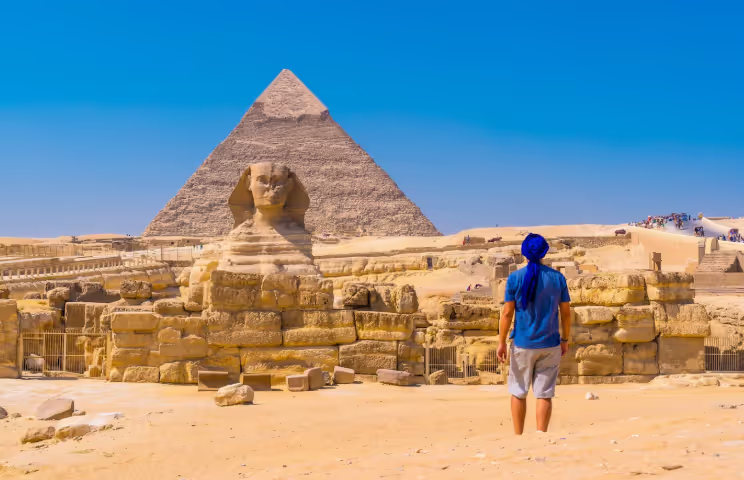Stay informed with our newsletter.
.webp)

.webp)

A recent discovery of ancient rock art in Egypt has provided valuable insights into the First Dynasty, offering a glimpse into the lives, rituals, and symbolism of early Egyptian rulers. These carvings, found in remote desert locations, depict scenes of power, religious ceremonies, and early hieroglyphic writing. Archaeologists believe the artwork helps fill critical gaps in understanding the origins of ancient Egyptian civilization and the emergence of its royal and cultural traditions.

An engraved artwork found near Aswan might represent one of the earliest portrayals of a powerful figure from ancient Egypt, shedding light on how early leaders used visual art to claim territory and express dominance.
This newly documented rock panel could provide rare insight into the rise of the First Dynasty, offering a glimpse into the development of early political leadership and how the Egyptian state began to take form. The end of the fourth millennium BC was a pivotal period, marked by the consolidation of various regional groups that eventually led to the formation of a unified Egypt under the ruler Narmer around 3100 BC.
However, the details surrounding how these regions merged and how centralized power was established remain largely speculative.
According to Dr. Dorian Vanhulle from the Musée du Malgré-Tout, who led the investigation, the process of Egypt’s unification and state formation is still difficult to clearly define. He believes that the rock carvings of the Lower Nile Valley may hold the key to understanding how political power emerged and how leaders utilized natural spaces to reinforce their control. Unfortunately, examples of such carvings are rare.
This is why the discovery of a rock engraving that may show an early elite figure holds such importance. The carving is impressively preserved and features a detailed boat scene. In the image, five people are seen pulling a boat, with one figure steering at the back and another seated atop a raised structure resembling a ceremonial platform.
Boats were a dominant symbol in early Egyptian visual culture. Dr. Vanhulle notes that during the Predynastic and Protodynastic periods, before the era of the pharaohs, boats appeared frequently in artwork and carried deep ideological and symbolic weight.
To pinpoint when this rock panel was created, Dr. Vanhulle compared its style and design with other boat depictions from early Egyptian art. Based on these comparisons, he determined that the panel likely dates to a time just before the First Dynasty officially began, a critical phase when Egypt was beginning to transform into a centralized kingdom, long before monumental architecture like pyramids existed.
The composition shares stylistic features with official images from the period just before and during the reign of Narmer. A standout detail is the seated figure’s long chin, which may be a reference to the ceremonial beards worn by early Egyptian rulers, supporting the theory that the individual depicted was part of the emerging ruling class.
The quality and symbolism of the artwork imply that it was likely ordered by someone in a position of authority. This finding reinforces the idea that such visual displays were used strategically by early elites to assert dominance and leave lasting impressions on the landscape.
Dr. Vanhulle emphasizes that this panel adds meaningful context to the limited collection of known rock art tied to Egypt’s early state formation. These carvings weren't merely decorative, they served as statements of power, embedded into the land to communicate leadership and control.
He also stresses the pressing need to document these discoveries. Expanding mining and quarrying in the region is destroying many ancient sites, making it crucial to carry out preservation efforts quickly.
As Dr. Vanhulle concludes, the ongoing environmental threats underscore the importance of rescue missions like the one that brought this ancient artwork to light.
For questions or comments write to contactus@bostonbrandmedia.com
Source: scitechdaily
